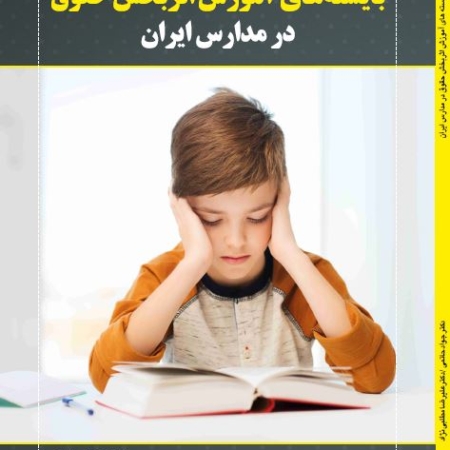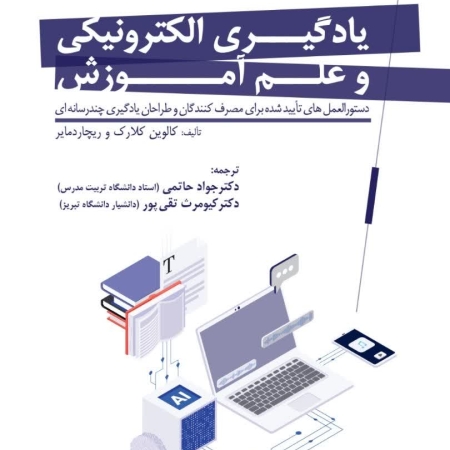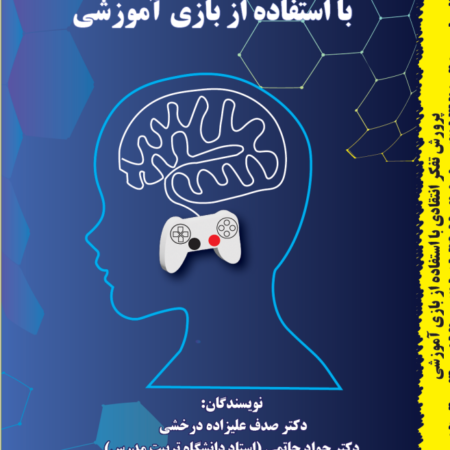توضیحات
Editors’ Introduction
In the present age, we have moved from many traditional concepts and practices to new ones that have affected all aspects of human life and the environment. Some of the achievements and practical results of these novels and created concepts can consider as threats or opportunities for the human race. The growing need for information resulted in forming the information revolution age to facilitate a better life in previous decades. Easy and accurate access to the various types of content (i.e., data, information, and knowledge) have played roles in creating novel formats for the traditional resources such as compiling e-documents instead of printed documents. On the other hand, the emergence of these digital resources and their exchange infrastructures has transformed language, culture, lifestyle, beliefs, habits, socio-economic relations, and the like in human societies. Therefore, the human race has faced the explosion of digital content through the significant growth of digital content and their exchange infrastructure in forms and platforms that did not exist before.
Digital content is a crucial concept of cyberspace in the current era. In contrast to print content, digital content includes machine-readable formats on basis of digital data, which is preserved on digital or analog storage. The creation of digital content comprises the process of generating and developing ideas to create visual or written content in digital formats in order to achieve the goals of data, information, and knowledge sharing. Digital content can be accessible in different forms such as images, graphics, video, audio, text files, and so on. Different forms of digital content are increasingly being produced, published, disseminated, and shared at every moment. In addition to traditional content producers of print media, the participation of new digital content producers or creators has been one of the main factors in the dramatic growth of digital content and the formation of the digital content explosion in the present era. Professionals and non-professionals as well as artificial intelligence and expert systems, play an important role in the upward and momentary growth of digital content production.
Automatic knowledge creation based on artificial intelligence facilities identifies as the factor in creating digital content in knowledge-based systems. The concept of literacy is changed from its traditional meanings in the 21st century that is considered capacity and capability in the use, creation, and sharing of digital content. In this manner, professionals and non-professionals benefit from the possibility of consumption, participation, and production of digital content due to capacity and infrastructure in the production of these new media in cyberspace. Hence, each cyberspace user can potentially consider the role of consumer, participator, and creator in digital content production. In this case, the process and technologies of digital content management should have an active operation and participation in creating the lifecycle of digital contents in cyberspace through gathering, processing, organizing, storing, and sharing of digital contents. In the current situation, the challenges facing digital content management are to send the right content, at the right time, to the right user, by the right device, and based on the right model.
This publication reflects an exchange of the views and scientific findings on digital content management during the International Conference on Digital Content Management, which was held on May 17, 2021, was attempted to cover some aspects and principles in the process and technologies of digital content management. The international conference has contributed to various fields of digital content management that can categorize into nine main topics, which explains as follow:
The principle of Digital Content Management: This topic has explained in the article entitled “Digital Content Management: A Topic for the Future” by Mohammad Hassanzadeh. The article briefly explained the multiplicity of the concept of digital content management and provided a platform for further discussion. The topics discussed in this article will be useful for policymakers, executives, and those involved in the field of digital content management.
Digital Content Engineering: The engineering mechanisms in Knowledge Organization Systems (KOSs) have been taken into account regarding digital content in an article entitled “An analytical approach to rank knowledge organization systems (KOSs) in digital content engineering and management” presented by Maziar Amirhosseini. The principal purpose of the present article is to analyze the main elements, engineering mechanisms, and the ranking method of Knowledge Organization Systems (KOSs) such as the thesaurus, ontology, and their types in storage and retrieval of digital and non-digital content.
The Relation between DCM and Knowledge Management: Two conference articles focused on the topic. Santhosh Shekar presented a lecture to identify the perspective and clarify the concept of content management and its relation to knowledge management and its related standard. A presentation entitled “Dissemination of Knowledge based on Social Networks” by Leila Jabbari analyzed knowledge sharing in social networks and the factors affecting knowledge sharing in social networks.
Digital library Development and Impact: A conference article, entitled “Challenges of Creating and Operating Digital Libraries in the Digital Transformation Age in Iran” by Maryam Moghadami, Mila Malekolkalami, and Hassan Mantegh analyzed the challenges of creating and implementing digital libraries in Iran and provide solutions to solve them. Moreover, Ahmadreza Varnaseri and Sepidhe Cirus Kabiri in their presentation, entitled “Investigating Effects of a Digital Library on Students based on its Equipment and Educational Purposes”, have focused on evaluating the effects of a digital library on students based on its equipment and educational purposes in the University of Tehran, Iran.
DCM in Libraries and Information Centers: The various components of content management in information centers, problems, prospectus, and possible solutions presented by KP Singh and Manir Uddin Ansari in the article entitled “Content Management in Information Centers: Opportunities and Challenges”. Azam Najafgholinejad and Sedigheh Shakeri presented the research results of an article, entitled “University Libraries Reaction to Covid-19 Pandemic”, to explore the reaction of central libraries of the first-grade universities in Iran during the COVID-19 pandemic via applying digital infrastructures. “Digital Content Management in the Age of Digital Transformation” was the title of another conference paper presented by Neeraj Kumar Singh to introduce DCMS @ Panjab University, Chandigarh, India as a digital content management platform in a library.
Digital Tools and Applications in Education: Stan van Ginkel in his article “Integrating Content into Presentation Skills by Making Use of Virtual Reality”, discussed a recently conducted VR experiment in realistic presentation skills courses of a Dutch university. An article, entitled “Post-Corona Digital Learning Management: Implications for Higher Education”, which presented by Omid Noroozi has focused on the most important implications of transformation in higher education through applying digital content management in the face of unprecedented Covid-19 challenge regarding the role of teachers, students, and institutes in higher education.
Specific Application of DCM: Sudha Jamthe presented an article, entitled “Digital Content Management in the Autonomous Vehicle”, to explain the role of digital content management in Autonomous Vehicles through clarifying the usage of digital content in the intra-car moving from the car to connect the car to the city, facilitate communication with other cars and dealer infrastructure.
Copyright of Digital Content: Copyright issue of digital content production as the topic of a conference paper presented by Maryam Sarrafzadeh to clarify and explain various aspects of the copyright issues and the related international and national law and legislation, especially in Iran in the production of digital content.
DCM Analysis and Evaluation: Maryam Tavosi and Nader Naghshineh presented an article to evaluate correlation analysis between the Altmetrics indicators on the ResearchGate network with each other. The analysis of co-word network and thematic clusters of the intellectual structure in the field of digital content management in Web of Science (WoS) during 2010-2020 has been evaluated by Elaheh Hosseini, Kimiya Taghizadeh Milani, and MohammadShaker Sabetnasab. Moreover, Hamideh Jafari Pavarsi and Hamideh Asadi examined the management and trend of “Digital Content” based on published research. An article presented to measure two effective factors (“Bounce Rate” and “Average Visit Duration”) on Google SEO in websites of the Iranian university library and correlation relationship analysis between them.
Finally, we would like to appreciate all the colleagues who supported the full process of these publications. Thanks to the members of the Scientific Committee who were the scientific advisors of the collection including, Prof. S. Hamid Khodadad Hosseini, Tarbiat Modares University, Iran; Prof. Rahmatollah Fattahi, Ferdowsi University, Iran; Dr. Omid Noroozi, Wageningen University, Netherlands; Prof. Javad Hatami, Tarbiat Modares University, Iran; Dr. Ali Ziayaee Mehr, Ministry of Education; Prfo. Alireza Isfandyari Moghaddam, Islamic Azad University, Iran; Prof. Hassan Ashrafi Rizi, Isfahan University of Medical Sciences, Iran; Prof. K P Singh, University of Delhi, India; Dr. Mitra Samiei, Allame Tabatabai’i University, Iran; Dr. Mohsen Nokarizi, Ferdowsi University, Iran; Dr. Davoud Masoumi, University of Gävle, Sweden; Dr. Ebrahim Rahimi, Open University, Netherlands; Dr. Tahereh Saheb, Tarbiat Modares University; and Dr. Katarina Michnik, Gothenburg University, Sweden. Many people also worked as part of the executive team, we appreciate all of them including Dr. Mitra Samiei (head of the committee); Maryam Moghaddami, Ph.D. Candidate, University of Tehran; Mila Malekolkalami, Hassan Mantigh, Najmeh Nazeri, and Leila Jabbari, Ph.D. Candidates, Tarbiat Modares University; Sahar Sabeghi, Fatemeh Sabbaghi, Zeinab Sabbaghi, Mohammad Nosrati, Fatemeh Abolfathi, Maryam Mohammad Nejad, and Sahar Khorashadizadeh, Scientific Association, KIS, Tarbiat Modares University; and Fereshteh Gholipour, Mohaddeseh Karimi, Mohammad Javad Bayrami, Shadi Abdoli, Donya Baradaran, Yasaman Shahrestani, Fatemeh Rajabi, Association, KIS, Allame Tabatabai’i University.
We are confident that the insightful materials presented herein would serve as a starting point and frontier ideas not only for the scientists but also for policymakers and practitioners of digital content management.
Editors
August 2021






